If you have done any searching on Google looking for information on how to teach young children the basics of literacy, it’s probably a safe bet to say you’ve come across Alphabet Tracing Boards. They are everywhere and there are a ton of different people making them ranging from small mom-and-pop places (like us) to big box stores.
Despite the growing popularity of tracing boards, most of us don’t actually know much about them. What are they used for? How do they help children learn how to write or read? What age does my child need to be to use them? And more…
In this post, our goal is to explain what alphabet tracing boards are, how they can be used to teach literacy to young learners, and which boards are good for which ages/stages of learning.
The goal is, by the end of this article, you will have a good understanding on which boards will be best for your young learner/s.
What are Tracing Boards?
To get started, tracing boards are typically a piece of wood that has a path engraved into it. The engraved paths can be shapes, squiggles, random paths, letters, numbers, names, words, etc.
The idea behind them is that they serve as a way for young learners to familiarize themselves with the shapes on the board and a guide for them to physically practice making those shapes with their own hands.
Why are Tracing Boards Useful for Teaching Literacy?
Tracing boards can be utilized to teach a ton of basic skills that are all important building blocks on the way to literacy.
To begin with, even before a child know what a letter is, they can begin to trace the shapes on the boards (see pre-writing boards below) to begin to develop their basic fine motor skills and hand-eye coordination.
As they develop and get stronger and stronger in these skills, you can begin to work on teaching proper pencil grip by introducing them to a wooden pencil and teaching them how to hold it properly as they trace the shapes.
Now that they have the basic building blocks of writing, it is an easy transition to learning actual letters (see name tracing and alphabet tracing boards below). With these boards children can start to recognize, learn, and practice writing the individual letters in their names and the entire alphabet.
As your young learner becomes familiar with the letters, you can take their understanding to a new level by introducing letter building pieces (see letter building sets below). These sets can be used to break letters up into their individual parts and encourage the students to think about how each letter is actually constructed.
Finally, students can integrate all that they have learned to begin creating basic words (see word building sets below) by learning how to put the letters together.
As we just demonstrated, albeit very briefly, tracing boards can be utilized as an important tool in every stage of the literacy learning process from basic fine motor skills all the way to the beginnings of word formation!
What Kind of Tracing Board Should I Buy for My Child?
To determine which tracing board will be best for your child, it’s important to be able to pinpoint where they are at in the learning process. So, take a look at each section below in more detail and see which one seems like it would help your young learner on the next steps in their journey to literacy.
Also, we are going to tack on a couple additional resources (letter & word building sets) that go beyond tracing boards. These are great options for your children once they have mastered the individual letters and are ready to move on to the next levels of literacy learning.
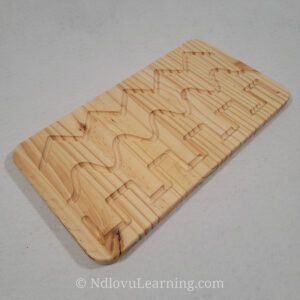
Pre-writing Tracing Boards
Ages Targeted
- 2-4 Years Old
Skills Taught
- Basic Fine Motor Skills
- Hand-Eye Coordination
- Tracing Abilities
- Concentration
- Following Instructions
- Listening
What are pre-writing tracing boards?
Pre-writing tracing boards are wooden boards that have squiggles, shapes, and other fun things engraved into them. The engravings should be larger and without too much detail. They should be easy for young learners with less developed fine motor skills and hand-eye coordination to follow.
How can children use them to learn?
There are a billion activities that you can do with pre-writing boards so we will just give you a couple ideas here. Initially, you can have the students trace the shapes with their fingers and move up to using wooden pencils. You can also have the kids fill the shapes with other objects such as marbles, sand, play-dough, etc.
You can do fun listening activities where you tell stories and your child has to respond in some way on his tracing boards. For example, you can tell a story and while they are tracing the lines every time they hear you say the word “stop” in the story, they need to freeze and when you say “go” in the story they can start tracing again.
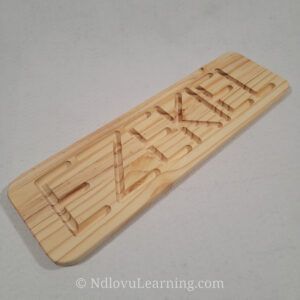
Name Tracing Board
Ages Targeted
- 3-5 Years Old
Skills Taught
- Letter Recognition
- Letter Formation
- Letter Sounds
- Name Recognition
- Tracing Abilities
- Concentration
What are name tracing boards?
The name tracing boards that we make here at Ndlovu Learning are all made from solid wood and have the letters of the child’s name engraved on them. They are typically around 5-6 inches tall with the width varying based on the number of letters in the child’s name.
The letters themselves are nice and big which makes them easy to trace and a good transition for young learners that have mastered their pre-writing skills.
Generally, we recommend name tracing boards before full alphabet boards for a couple reasons. The first reason is because kids LOVE to learn how to spell their name! It always seems much easier to get them to learn the letters of their own name than other words.
The second reason we recommend name boards before full alphabet boards is because there are a lot less letters to learn. Most names only have 4-8 letters which is way less overwhelming than a board with 26 letters. They can build a lot of momentum and confidence by learning the letters of their name before they move on to the full alphabet.
How can children use them to learn?
Name boards are really great for learning initial letter recognition, structure, and sounds. For example, if your child is named Frank, you can ask them to find the letter F, trace it, and tell you which sound it makes. Then you can do the same with R, and so on. Once they get the hang of that, you can teach them how certain letters combine to make new sounds, like FR. Eventually, they will have a full understanding of the letters that make up their names.
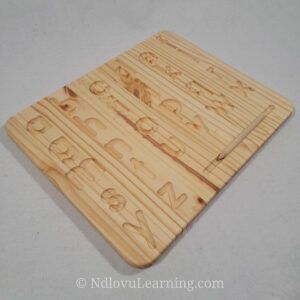
Alphabet Tracing Boards
Ages Targeted:
- 4-5 Years Old
Skills Taught:
- Letter Recognition
- Letter Formation
- Letter Sounds
- Name Recognition
- Tracing Abilities
- Concentration
What are alphabet tracing boards?
Alphabet tracing boards are solid wood boards that have the entire alphabet engraved into them. They often have only upper or only lower case letters. However, some have upper case on one side and lower case on the other side. We also have a version that has both the upper and lower case on the same side so a child can see both cases of a letter right next to each other. There are also print and cursive versions of everything we’ve already mentioned.
The letters themselves are typically a bit smaller than the letters on the name boards so they require a little more developed level of fine motor skills and hand-eye coordination to be able to trace them.
How can children use them to learn?
The primary function of alphabet tracing boards is to help a young learner learn all the letters of the alphabet. The first step is simply being able to know the shape of each letter and its name. Repetition is usually really good for this and we find that kids love doing it. We have heard multiple accounts of parents incorporating their child’s tracing board and alphabet practice into their bed-time routine and the kids look forward to it every night.
Once they learn the letters you can start doing other fun activities with them to help them grow in familiarity with them. For example, you can call out letters and then they must find that letter, trace it properly, and tell you the sound it makes. You could also use this activity to help them learn other skills like pattern recognition and further develop their fine motor skills by having them fill letters with different colors of objects such as sand, beads, marbles, etc.
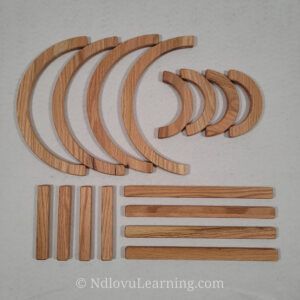
Letter Building Sets
Ages Targeted
- 4-5 Years Old
Skills Taught
- Letter Formation
- Letter Recognition
- Upper Case vs Lower Case
What are letter building sets?
Letter building sets are wooden “pieces” of letters that children can use to physically build the letters they are learning. The letter building sets that we make here at Ndlovu Learning are made from solid wood and consist of long sticks, short sticks, large half circles, and small half circles.
With those four shapes, you can build any letter in the English alphabet!
What age are they good for?
Letter building sets are super tactile and a great way for young learners to practice physically building the letters they are learning. It might be good for them to have a basic understanding of most of the letters before breaking out the letter building sets; however, you can also use them simultaneously with the alphabet tracing boards.
Our favorite activity to do with the letter building pieces can be a lot of fun! It involves placing all the pieces on the table and then showing your student the letter you want them to build. They must then find the pieces they need to make that letter and lay them out in front of them so they make the letter.
If you have a big enough set with enough pieces, you can also have your child start to spell out entire words with the letter building pieces.
Word Building Sets (5-6 Year Olds)
Ages Targeted
- 5-6 Years Old
Skills taught
- Letter Sounds
- Phenome Segmentation
- Letter Blending
- Word Formation
- Sight Words
- Rhyming Words
- Consonants vs Vowels
What are word building sets?
Word building sets consist of a collection of individual wooden tiles with a single letter engraved on each tile. Tiles with vowels are usually a different color than tiles with consonants. There is also a board that the tiles fit into. The boards are usually designed to be able to spell a series of three letter words but this can vary based on the set.
What age are they good for?
Word building sets are pretty much the culmination of all the previously mentioned activities and skills. They help students take their knowledge of the letters of the alphabet and begin to put them together to form actual words.
There are a ton of different activities you can do with these but one of the most popular is to spell out multiple words that all rhyme. To being with students learn that all rhyming words will have the same vowel in the middle so they can place the “a” tiles in the middle slots. The second aspects of rhyming words is that they have the same ending sound. So, they can then place the “t” tiles in the third slots for each word. Then they can determine which letters they can put into the first slots to create words that rhyme like “bat”, “cat”, “fat”, “hat”, “pat”, “rat”, and “sat”.
By doing that simple activity, the student has worked on letter sounds, word construction, phenome segmentation, sight words, rhyming words, consonants, vowels, and more.
Hopefully, you now have a better idea on which tracing board is best for the current stage your child is in on their journey to reading and writing.
Tracing boards are an excellent way to develop all sorts of skills ranging from basic fine motor skills and hand-eye coordination all the way up to more advance skills like phenome separation and word formation.
Where to Buy Name Tracing Boards
If you’re in the market for name tracing boards, there is no shortage of places to purchase them from. You can get them on Amazon, Montessori focused education website, Etsy, and even big box stores.
Obviously, we would be honored if you would trust us to create your child’s tracing boards. We produce all of our learning tools with love and care and the highest quality products we can find. All of our wooden products such as tracing boards and letter building pieces are constructed from solid wood.
Each piece we produce is rounded and sanded smooth and finished with a high-quality, food-grade mineral oil to protect the wood and ensure it is safe to handle for young learners (and their younger siblings). The mineral oil we use is made to be used on cutting boards so it’s definitely okay if one of our pieces ends up in some little tyke’s mouth!
Anyway, feel free to visit our shop. If you can’t find what you’re looking for there, please send us an email at dustin@ndlovulearning.com and we will be more than happy to work with you to create exactly what you’re looking for.
Finally, if you have any experience with any of these learning resources or have any questions for us, please drop them in the comments below!

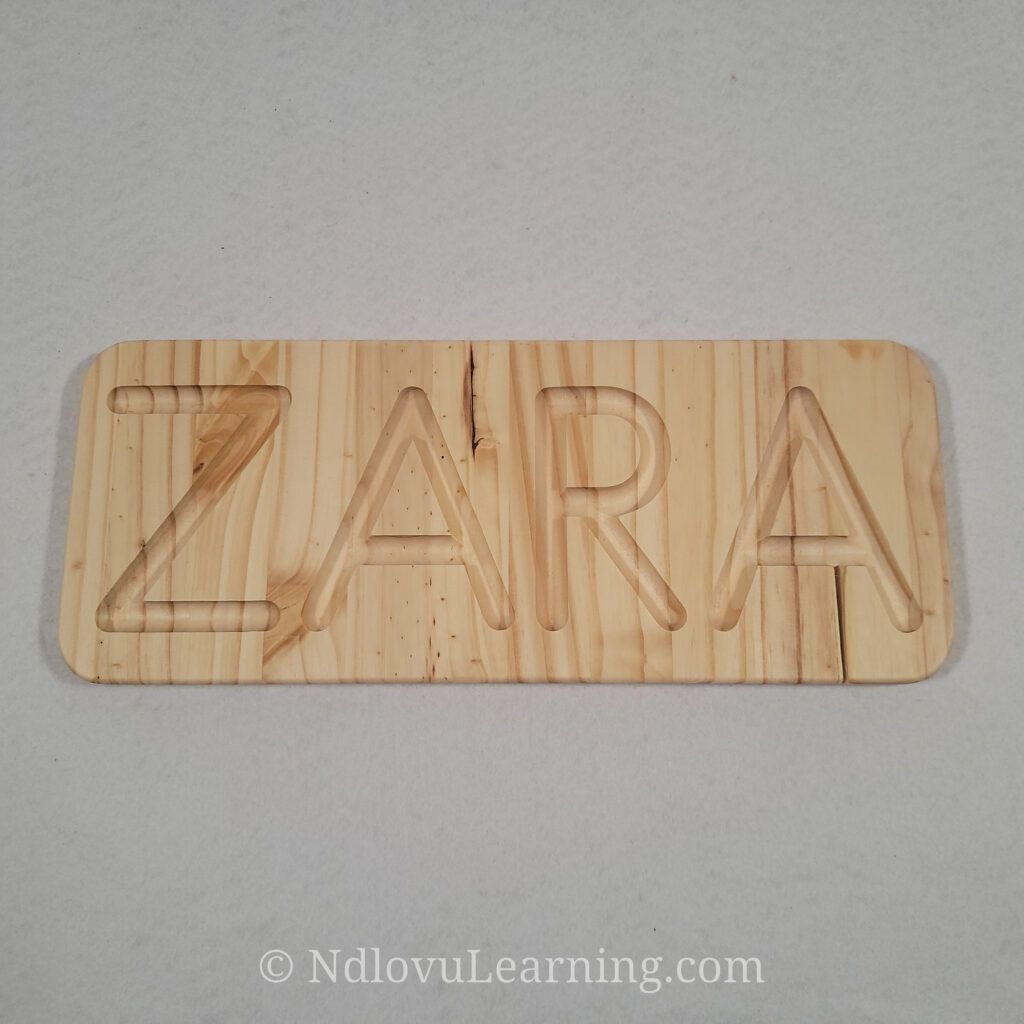
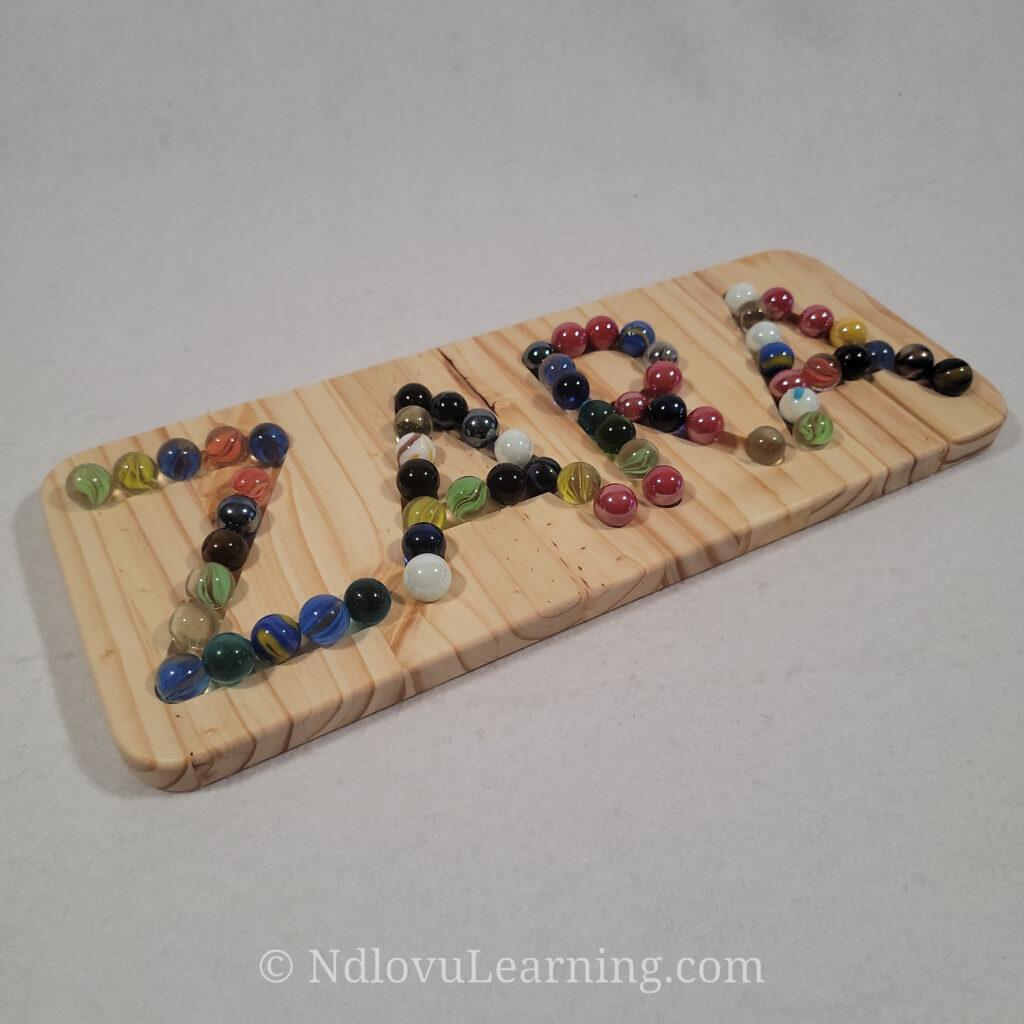
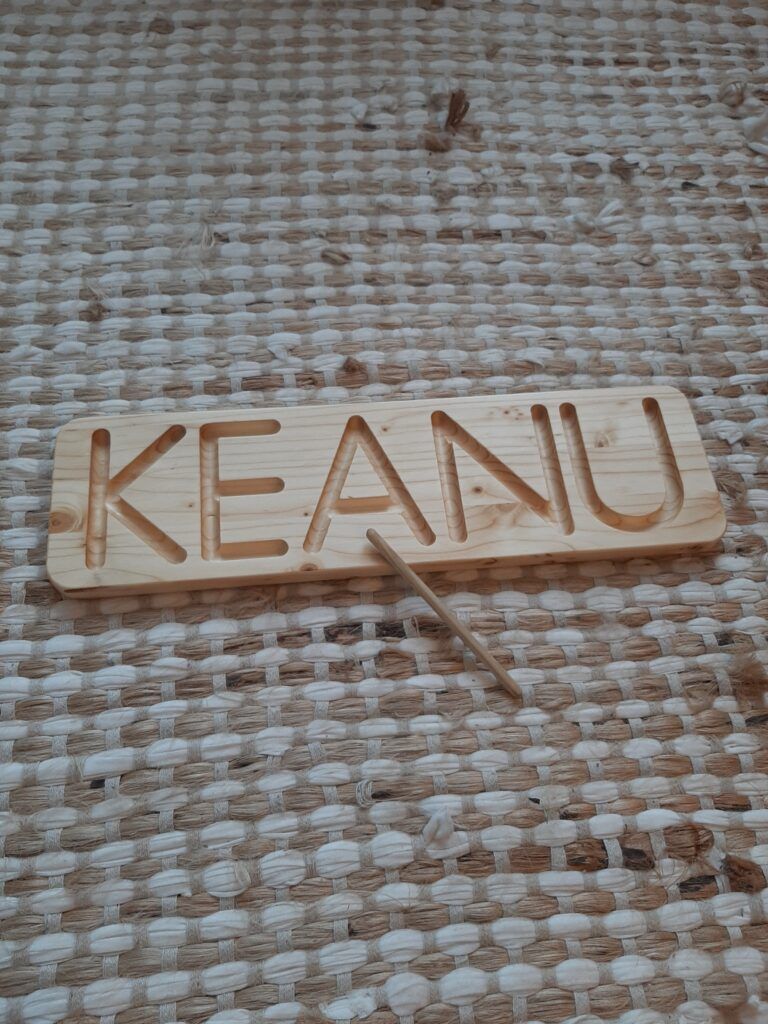
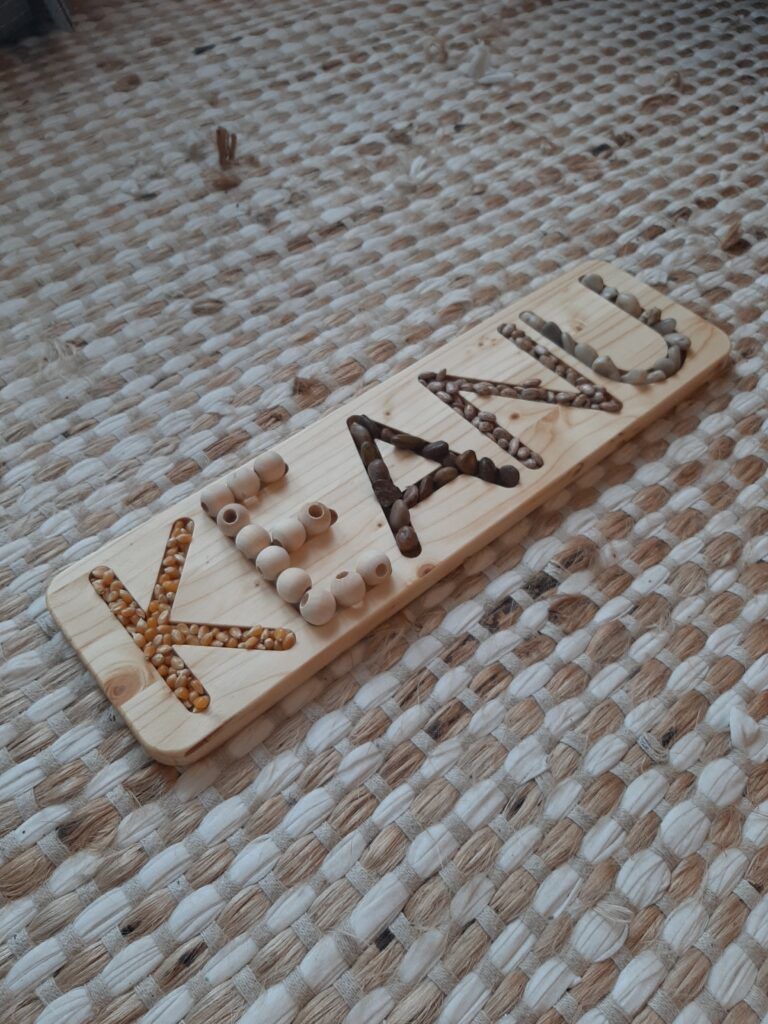
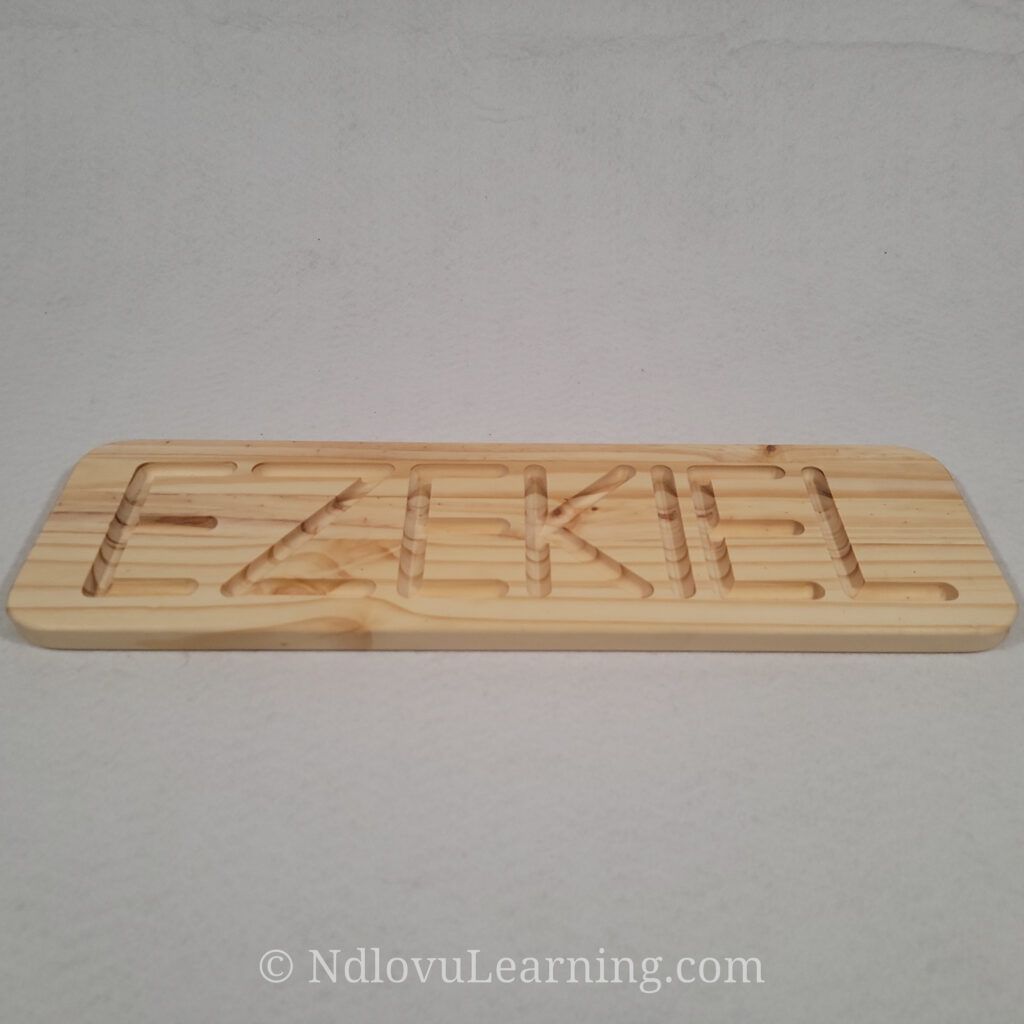
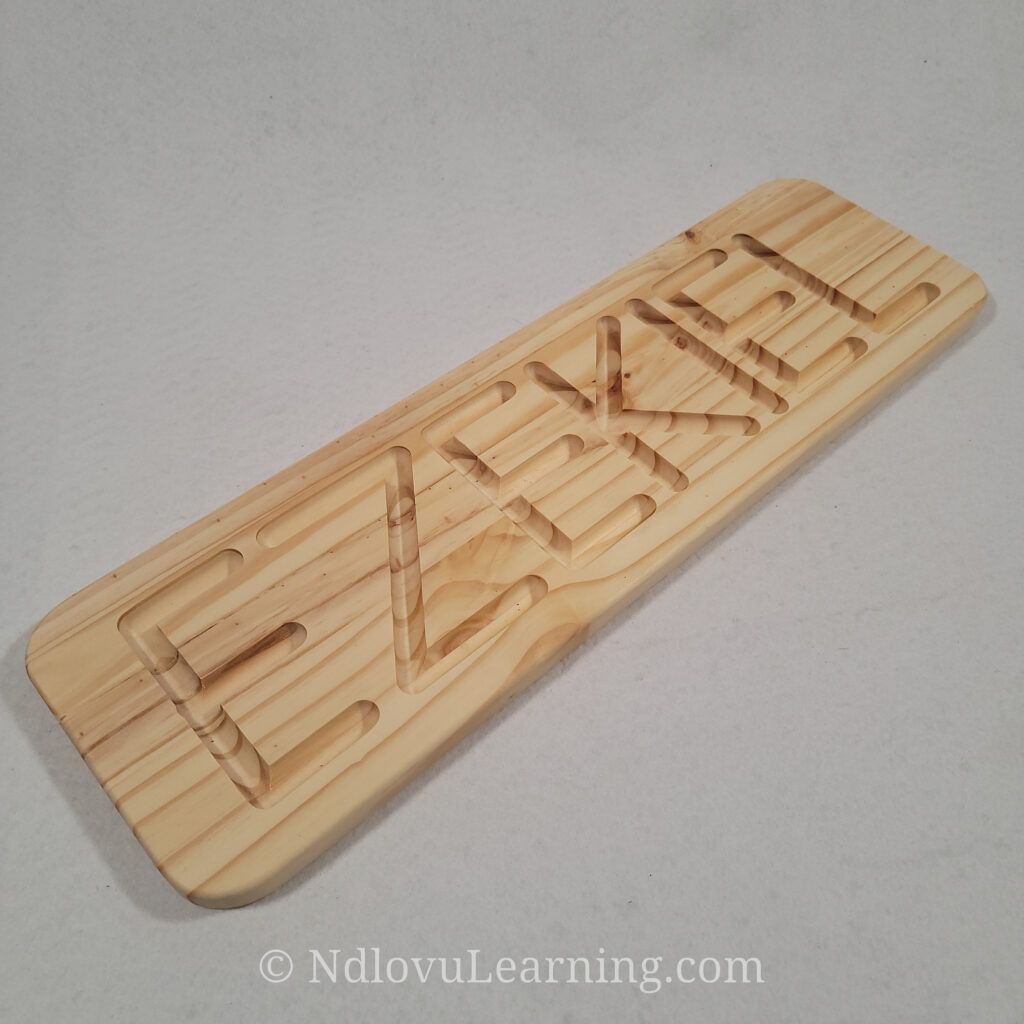
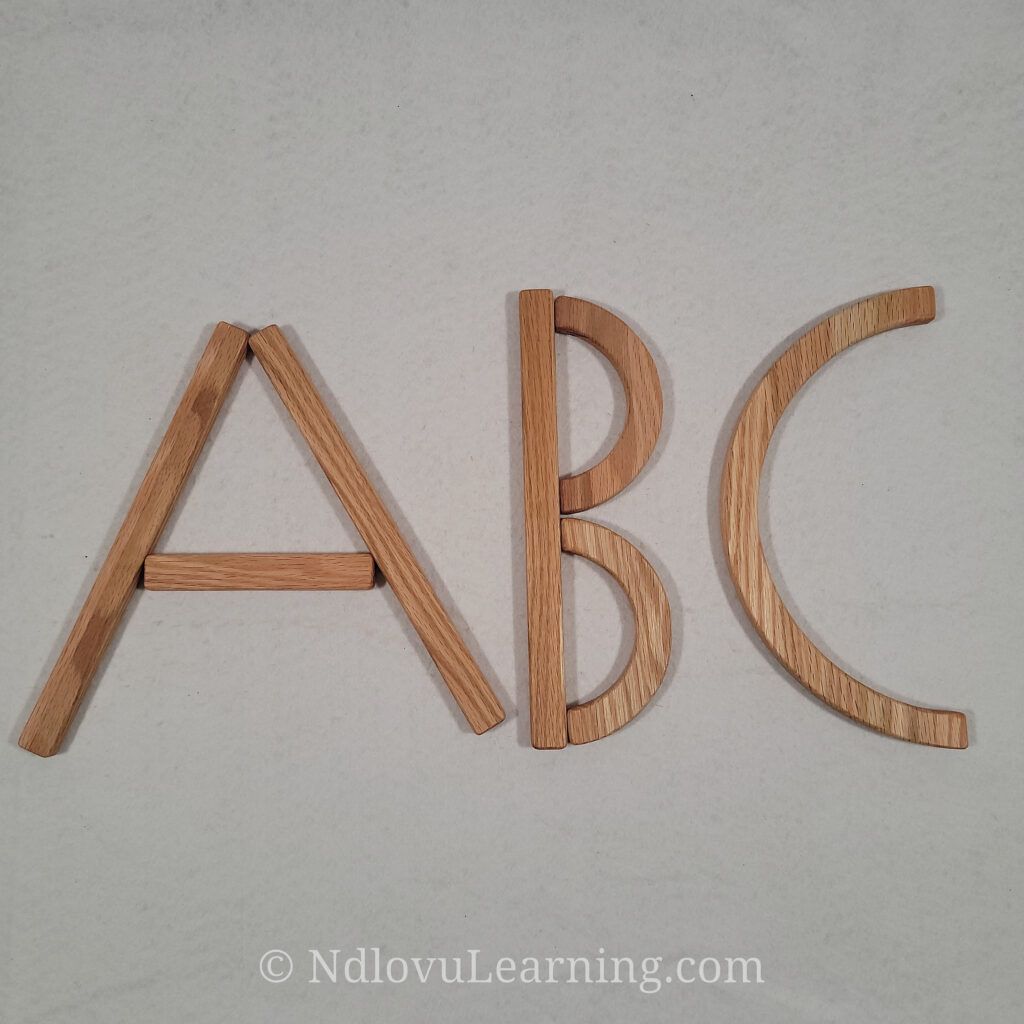
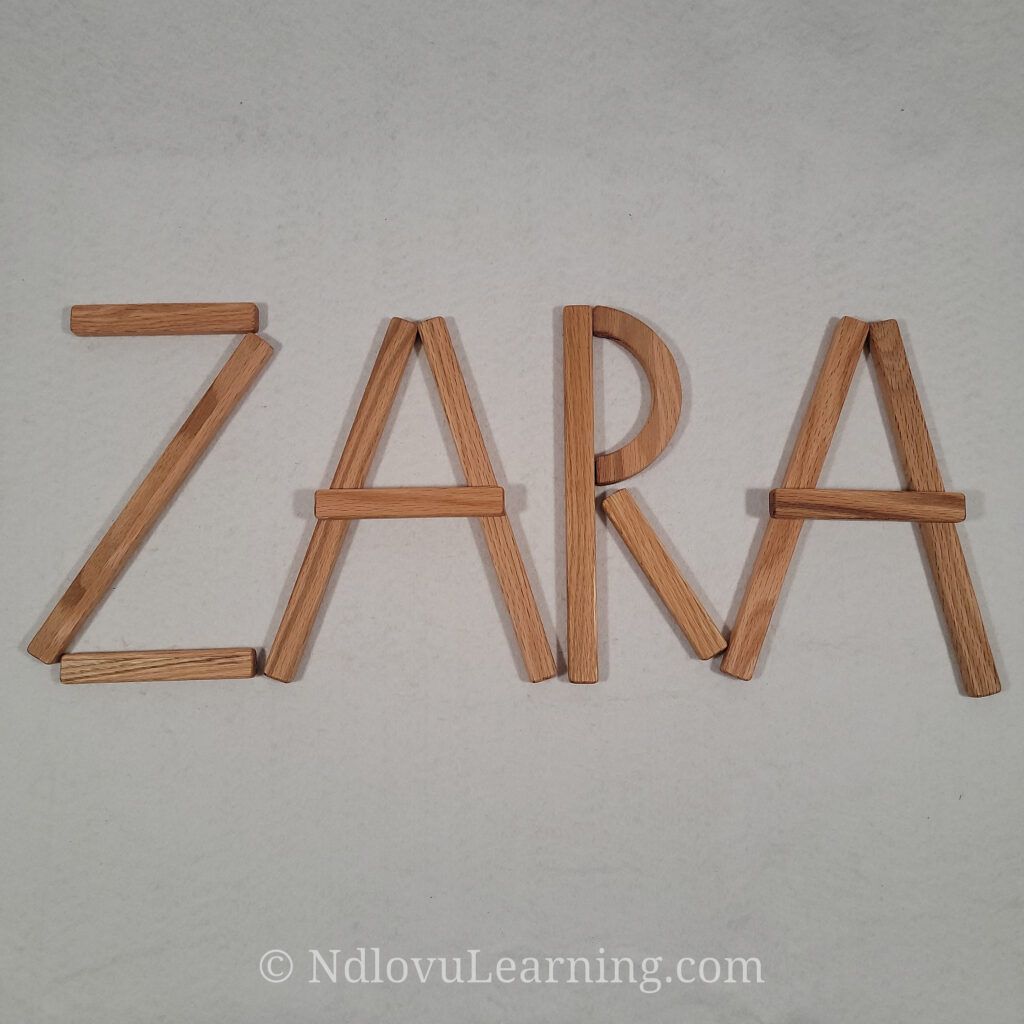
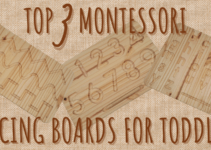
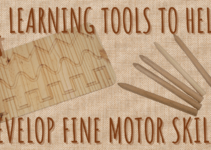
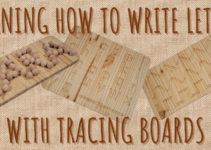
Hello Ndlovu Learning team! First off, I have to say that I absolutely love your website setup and your niche is amazing! There are many parents/guardians out there looking for ways to teach their children the alphabet in a fun and refreshing way. The fact that you make your own alphabet boards is amazing! I’m looking for ideas on things to buy for my friends when they become parents and this is a great idea! Thanks for sharing 🙂
Thank you for the nice comment Sam! When you’re friends end up having some babies, keep us in mind! We can ship our literacy learning tools all over the country!
Yes, something I need for my little sister. This is a great tool to help your kids learn the alphabet and many other shapes! I am very glad I came across this as it is very important for your child to learn and develop skills to not fall behind anyone else within their age group.
Are there any for math?
The tracing board is an excellent use for toddlers as well, it would make a great memory for the parents and to see how well developed their child is.
Hey Caleb,
We do have a few boards focused on learning numbers and basic math:
0-9 Number Tracing Board
1-10 Counting Board
Alphabet & Counting
We also have pre-writing boards that are great for toddlers specifically. With those they are basically learning basic fine motor skills and hand-eye coordination as well as basic skills like properly holding pencils.
I’ve never heard of these boards! I’m a nanny for a 5-year-old and I wish I had known of these several years ago. The price of your boards is reasonable, especially considering that they are built of sturdy and everlasting wood. They could be saved for the future, additional children, passed on or sold. I’m going to pass this info on to a few friends whose children are younger!
That’s awesome Cynthia,
We would greatly appreciate it if you passed on our site to your friends! We would love to be able to be a part of their kids’ learning!
You are definitely right that these are an item that could be passed from child to child and generate to generation as families grow!
This is something that everyone should definitely afford for their children. I like the boards and I think the kids would be interested, because through the game they can learn something. Wood is the best option when it comes to toys and that is why you have all the recommendations from me.
I did not know about alphabet tracing Boards that can help our kids learn and interact with different letters. Now, these tracing boards can really help my grandchildren who are six, 3, and 2. I’m going have check into these boards so they can learn to start spelling their names and knowing the alphabet before starting kindergarten.
It’s great to hear about your grandchildren Jannette! We’ve found that the tracing boards, especially the name tracing boards, are a great way to get young learners really excited about learning to write. We just posted a couple pictures and videos on our Instagram account of a 2.5 year old practicing her name!
Let me know if you have any questions or would like to order a couple boards for your 2 & 3 year olds!